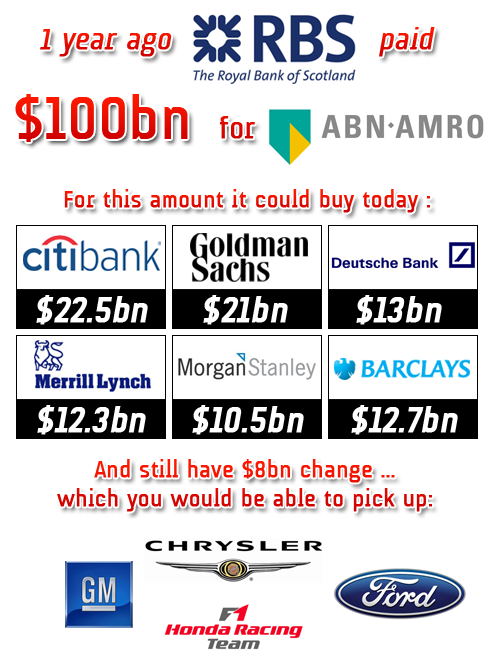Japan Airlines CEO
Haruka Nishimatsu is the CEO of Japan Airlines. He was featured on CNN last month because his humble salary and way of living is in such stark contrast to the excesses enjoyed by his US counterparts.
At one point, it seems he is making less than his pilots !!!
Beckham @ AC Milan
The England midfielder joined the Rossoneri this weekend on a three-month loan deal from Los Angeles Galaxy.

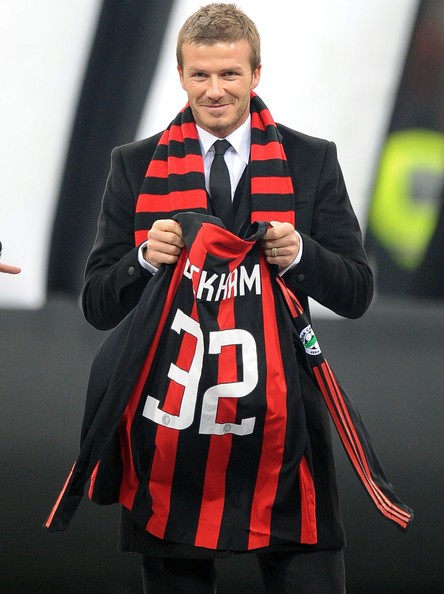

Some Photos From 2008
2008 has been an eventful year, it is difficult to sum up the thousands of stories on a blog, that is why I picked only 10 before closing the year.
(click on pictures to see larger size)

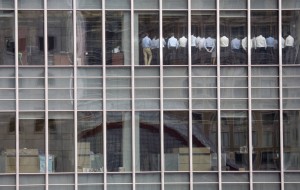

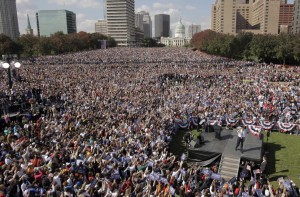
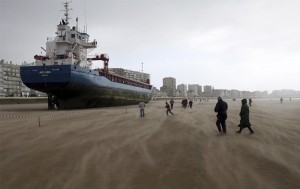





Prologis
![]()
ProLogis (NYSE: PLD) is the world’s largest owner, manager and developer of industrial distribution facilities. The company operates in 118 markets across North America, Asia and Europe, with more than 500,000,000 square feet (46,000,000 m2) owned, managed or under development. Its customer base includes manufacturers, retailers, distributors, transportation companies, third-party logistics providers and other companies with large-scale distribution needs.
ProLogis’ Common Shares are publicly held and are traded on the New York Stock Exchange under the symbol “PLD.” The company operates as a Real Estate Investment Trust (REIT) for federal tax purposes and pays regular quarterly distributions to shareholders. In 2003, ProLogis was added to the S&P 500.
My story with Prologis stock is like all others stocks traders, after you sell and lose money, the symbol starts picking up high, so high … !!! the below chart is my real example.
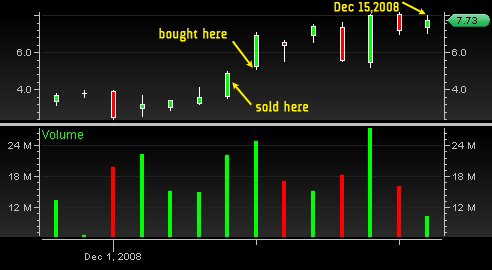
Russian Businessman Has Trademarked ;-)
![]()
How much would you pay for a ;-)? A Russian businessman has trademarked the emoticon — or combination of punctuation marks — used to convey a wink in text messages and e-mail.
Oleg Teterin, president of the mobile ad company Superfone, said Thursday he doesn’t plan on tracking down individual users following the decision by the federal patent agency.
“I want to highlight that this is only directed at corporations, companies that are trying to make a profit without the permission of the trademark holder,” he said in comments to NTV.
Companies will be sent legal warnings if they use the symbol without his permission, he said.
“Legal use will be possible after buying an annual license from us,” he was quoted by Kommersant as saying. “It won’t cost that much — tens of thousands of dollars.”
He also said since other similar emoticons — :-) or ;) or :) — resemble the one he has trademarked, use of those symbols could also fall under his ownership.
Indeed, Russia media said Teterin wasn’t the first to try to trademark the symbol in Russia. Kommersant said a St. Petersburg court in 2005 agreed with an appeal from the German corporation Siemens, which was sued by a Russian man claiming he held the trademark.
Scott Fahlman, a professor at the Carnegie Mellon University in the United States, claims that he was the first to use three keystrokes — a colon followed by a hyphen and a parenthesis — as a horizontal “smiley face” in a computer message 25 years ago.
Original news from http://www.sfgate.com
Related articles by Zemanta
10 American Financial Meltdowns in the Past Centuryonomy
Original Copy Of This Post @ Neatorama
Banks failed, stock prices collapsed, and panic descended on Wall Street. Americans were holding their collective breath as a rescue plan was hastily drafted. The 2008 financial crisis? Nope – it was the Panic of 1907, and again in 1929, 1987, and so on.
Since its independence more than 230 years ago, the United States has grown to have the largest economy in the world (GDP of $13.8 trillion as of 2007, by the way. That’s $13,800,000,000,000). But we didn’t get there without quite a few bumps on the road.
To put today’s economic trouble into perspective, let’s take a look at the 10 financial disasters in the United States in the past century:
1. The Panic of 1907

Floor of the New York Stock Exchange in 1907. Photo: Helen D. Van Eaton
Background: At the time, the young US stock market was in a decline – it was off 25% since the beginning of the year and Wall Street was jittery over the tight money supply.
Trigger: Then along came Otto Heinze with his get-(even)-rich(er)-quick scheme. In October of 1907, Otto, along with his brother, a copper magnate named Augustus Heinze, and the ice king (yup, he sold ice – remember, this was before the age of household refrigerators) Charles W. Morse, aggressively bought shares of United Copper, thinking that they could corner the market on the stock. Their plan failed spectacularly, and immediately bankrupted the trust companies and banks that provided the financing.
Runs on banks immediately ensued as depositors pulled their money from banks that had dealings (or rumored to have dealings) with the trio. In a little less than two weeks in the Panic of 1907, a chain reaction had left 9 trust companies and banks bankrupt.
 The Solution: At the time, the United States had no central bank (President Andrew Jackson had abolished the Second Bank of the United States some 6 decades earlier), but we had J.P. Morgan.
The Solution: At the time, the United States had no central bank (President Andrew Jackson had abolished the Second Bank of the United States some 6 decades earlier), but we had J.P. Morgan.
The 70-year-old financier stepped in to bail out, er … save trust companies worth saving and let those who were too far gone to fail. The infusion of cash helped stop the domino effect of failing trust companies, but more money was needed.
So here’s what he did:
Morgan gathered 50 trust company presidents at his library, told them to come up with $25 million on their own and left them in a large room. He withdrew to his librarian’s office. At 3 a.m., he called in one of his sleep-deprived lieutenants, Ben Strong, for a review of a trust company’s books. Strong gave his report, then headed to the library’s front doors and found them locked. Morgan had the key in his pocket. No one would leave until the trusts ponied up. The presidents continued to talk. At 4:15, Morgan walked in with a statement requiring each trust company to share in a new $25 million loan. One of his lawyers read it aloud, then set it on a table. "There you are, gentlemen," said Morgan.
No one moved.
Morgan drew Edward King, head of the Union Trust, to the table. "There’s the place, King," he said, "and here’s the pen." King signed. The other presidents signed. They set up a committee to handle the loan and supervise the final-stage bailouts of endangered trusts. At 4:45, the library’s heavy brass doors swung open and let the bankers out. (Source)
Aftermath: The government realized that only having people like J.P. Morgan in charge of saving the entire country’s economy was kind of a bad idea, so it created the Federal Reserve System.
2. Wall Street Crash of 1929

The trading floor of the NYSE right after the crash.
Background: In the Roaring Twenties, optimism was everywhere: the Great War, as World War I was called back then, was over and advances in technology seemed limitless. Along with that optimism was an incredibly speculative bull market: stocks went up four fold in value in that decade.
Hundreds of thousands of Americans borrowed money to play the stock market. They bought stocks with just a fraction of the value in cash and financed the rest by borrowing from the broker ("buying on margin," if you’ve never heard it before). Needless to say, stocks became overvalued fast.
The Crash: What goes up, must come down – but it doesn’t have to come down all in one day. The Wall Street Crash of 1929 came in forms of three "black" days.
In the morning of October 24, 1929 – later nicknamed "Black Thursday"- a massive sell-off happened. More than 3 times the normal amount of shares were traded and stock prices tumbled. Richard Whitney of J.P. Morgan and Company came to the trading floor … and instead of halting trading like everyone expected, he started buying confidently and the market recovered. The market actually went up the subsequent Friday and a little down on Saturday (back then, they traded on Saturdays). And then … the bottom fell off.
On Monday, October 28, 1929, nicknamed Black Monday, the market fell 13% and the next day, nicknamed Black Tuesday, the market fell another 12%. Financiers like General Motor’s William C. Durant and the Rockefeller family stepped in and bought stocks to show confidence, but their efforts failed to stop the slide. (Source)
That week (with heaviest losses over the first two days) the market lost $30 billion, ten times more than the annual budget of the government and more than what the US had spent in all of World War I.
Over the next few weeks, the stock market suffered sharp declines though the true bottom wasn’t reached until July 1932. Over three years, the stock market dropped a staggering 89%. It would take about 25 years for the stock market to recover and re-attain the 1929 level. (Source)
Aftermath: The Wall Street Crash of 1929 led directly to …
3. The Great Depression

"Migrant Mother," a photo by Dorothea Lange depicting Florence Owens Thompson,
a destitute pea picker in California, mother of seven children, age 32.
(Source)
Background: Stung by heavy losses on Wall Street, consumers began cutting expenditures. With lowered demand, businesses started laying off people (US unemployment rate rose to 25% by 1933) – which fed an ever-worsening cycle and plunged the US economy into a depression.
As debtors defaulted on their loans, banks began to fail, which led to bank runs as depositors attempted to withdraw their money en masse, triggering even more bank failures. Today, your deposit is insured in the event of a bank failure, but in 1930s, there was no such thing: when a bank failed, its depositors lost all of their money. In the first 10 months of 1930, 744 US banks failed and their depositors lost more than $140 billion. Before the decade was over, about 9,000 banks failed. (Source)

Hooverville in Levittown, New York (Source)
Hooverville: Many people thought that President Herbert Hoover did nothing to save them from the Great Depression. That’s just not true: Hoover did a few things, including deporting about 500,000 Mexicans to Mexico (half of which were actually born in the US and thus were legal citizens) and increasing tariffs on imports – which caused other countries to retaliate and US exports to plunge by more than half, but nothing worked.

Hard Times Are Still quot;Hoover"ing Over Us, photo of two children in a Hooverville (Source)
Many of the people made homeless by the Great Depression lived in makeshift shantytowns called Hoovervilles. They used "Hoover blanket" (old newspaper) to keep warm, wave "Hoover flag" (an empty pocket turned inside out) and drink "Hoover soup" at restaurants (poor people would pour ketchup, salt and pepper into their drinking water at restaurants, then tell the waitress that they didn’t see anything they wanted on the menu). Those who were relatively better off drove "Hoover wagon" (a car pulled by a horse because the owner couldn’t afford gas). (Source)
Solution: In 1933, the newly elected President Franklin D. Roosevelt initiated the New Deal, which included work relief program for the jobless, financial aid to farmers and business reform, including setting minimum wages and maximum weekly hours. Roosevelt encouraged trade unions and forced businesses to work with the government to set prices (later found to be unconstitutional).
In Roosevelt’s first term, unemployment fell by two third and the economy stabilized; full recovery, however, didn’t occur until the start of World War II.
Aftermath: The Great Depression had a far reaching effect, even until today. Social Security, the Tennessee Valley Authority, the Securities and Exchange Commission, the Federal Deposit Insurance Corporation (FDIC), and the Federal Housing Authorities are direct products of the New Deal that are still active today.
4. 1973 Oil Crisis

Cars waiting in line at a gas station (1979).
Photo: Warren K. Leffler, Library of Congress
Background: In October 1973, Syria and Egypt launched a surprise attack on Israel on the Jewish day of atonement or Yom Kippur. This set off a twenty day war known as the Yom Kippur War (or Ramadan War), in which the Arab forces were defeated.
The embargo: Angry over Western nations’ support of Israel, members of the Organization of Petroleum Exporting Countries (OPEC) as well as Egypt and Syria shut off oil export to the United States, Western Europe, and Japan.
 The crude oil price immediately quadrupled to $12 per barrel (I know. Twelve bucks. How quaint when compared to today’s prices!) which led gasoline price at the pump to jump 40% from 38.5 cent to 55 cent per gallon in 1974 (again, I know). The oil shock led to a huge drop in the stock market. The New York Stock Exchange lost $97 billion in value in just six weeks.
The crude oil price immediately quadrupled to $12 per barrel (I know. Twelve bucks. How quaint when compared to today’s prices!) which led gasoline price at the pump to jump 40% from 38.5 cent to 55 cent per gallon in 1974 (again, I know). The oil shock led to a huge drop in the stock market. The New York Stock Exchange lost $97 billion in value in just six weeks.
US Government responded by rationing gasoline. Long gas lines formed at the pump. In many places, motorists with even-numbered license plates were allowed to buy gas only on even-numbered dates and those with odd-numbered plates could buy only on odd-numbered dates. (Source)
Aftermath: To help reduce consumption, the federal government imposed a national maximum speed limit of 55 mph and mandated fuel efficiency standards for car manufacturers. The government also created the Strategic Petroleum Reserve and the Department of Energy.
5. Black Monday (1987)
 The Crash: On Monday, October 19, 1987, the US stock market crashed. The Dow Jones Industrial Average dropped 508 points or 22.6%, the largest one-day percentage decline in the stock market history. At one point during the day, so many shares were being sold that "the New York State Stock Exchange ticker fell behind and TV newscasters couldn’t tell how much the market had fallen." (Source)
The Crash: On Monday, October 19, 1987, the US stock market crashed. The Dow Jones Industrial Average dropped 508 points or 22.6%, the largest one-day percentage decline in the stock market history. At one point during the day, so many shares were being sold that "the New York State Stock Exchange ticker fell behind and TV newscasters couldn’t tell how much the market had fallen." (Source)
The Culprits: The most popular culprits for the 1987 Black Monday were program trading and a new financial hedging method called portfolio insurance. These two things caused massive stock sell offs and drove down the stock price (note that other factors such as the weak dollar, large US trade deficit, and overvaluations of stock values might have played a role as well) (Source)
Program trading is easy to explain: in the early 1980s, the use of computers became increasingly popular in Wall Street. Traders began to use computers to execute rapid trades based on a pre-determined condition (say, sell when a stock price dropped to a certain point). Dropping stock prices trigger these automated trades, which flood the market with stock shares and caused an even steeper decline in stock prices.
Portfolio insurance is a little bit (okay, a lot) more complex. In 1976, two young Berkeley finance professors named Hayne Leland Mark Rubinstein thought of a way to "insure" a portfolio investments of stocks similar to the way insurance protects an asset. For a price (a kin to an insurance premium), their trading system can guarantee that an investment never loses more than a pre-set (and relatively small) amount.
To do this, portfolio insurance uses financial instruments called derivatives. Most people understand buying and selling stocks – if you buy a share of stock for $1 and sell it for $3, then you’ve made a profit of $2. Derivatives, on the other hand, let you speculate on the future price of a stock (or a commodity, or really anything at all) without ever owning a single share. For example, you can buy a futures contract, essentially an agreement to purchase a stock say a week from now for $1. If the price of the stock is greater than $1, then you’ve made money. If the price of the stock is less than $1, then you’ve lost money. At no point in time do you actually buy the stock!
In the case of portfolio insurance, say you have $1000 in stocks that you want to safeguard from falling in value by next week. Then you sell a futures contract for the stocks. If the value of your stocks dropped, you’ve lost value in your stocks but gained money from the futures contract. (Yes this is simplistic, but that’s the basic idea).
Without getting into mind boggling technical details, suffice it to say that the portfolio insurance method linked stock prices to the futures index. The whole thing would work but for one teensy flaw: during a panic sell off, there is little market liquidity – you can try to sell stocks, but without any buyer, you effectively can’t sell it at any price.
Aftermath: In response to Black Monday, the New York Stock Exchange instituted trading rules (the so-called "circuit breakers") to pause trading if the market fell precipitously. The Federal Reserve also get to play a really big role in ensuring liquidity by pumping billions of dollars into the banking system.
Remember the term derivatives. We’ll see that again, soon enough!
6. Savings & Loan Crisis (1989)

Lincoln Savings and Loan, back in its heyday of 1965 (Source)
Background: A Savings and Loan institution is kind of like a bank: people deposit their money in it in the forms of savings, and the S&L gives out mortgages (or loans) to the local community. S&Ls have existed since the 1800s and they were tightly regulated until the late 1970s.
In the late ’70s, the newly available money market funds offered much higher interest rates than the S&L, so people started pulling their money out of S&Ls. As a response, S&Ls asked for government deregulation (which they got*) – effectively, S&Ls could then raise interest rates on deposits and make way more loans than before with little oversight. There was a regulatory body, the Federal Home Loan Bank Board (FHLBB), but it was understaffed and its officers were accused of being chummy with the industry.
The S&L Crisis: In the real estate boom of the early ’80s, many S&L grew extremely large, extremely fast. Between 1982 and 1985, S&L assets (many of which were speculative real estate holdings and commercial loans) grew 56%. In Texas, 40 S&Ls tripled in size, with some doubling each year. (Source)
Needless to say, many were overextended (some were technically bankrupt, but according to the new deregulation rules, they could remain open and thus continued to make bad loans).
By 1987, 505 S&L institutions failed. Some, like those in Texas, failed spectacularly – losses in just that one state comprised more than half of all S&L losses nationwide. The deposits were guaranteed by the Federal Savings and Loan Insurance Corporation (FSLIC, just like the FDIC guaranteed bank deposits) – but because of the amount, it turned out that the FSLIC itself was bankrupt!
All in all, by 1995, 747 S&Ls or half of all the S&L institutions in the United States went bankrupt.
The Keating Five: You may have heard of the term "Keating Five," here’s the story in a nutshell. In 1984, construction magnate Charles Keating bought Lincoln Savings and Loan of Irvine, California. Before then, Lincoln S&L was a profitable yet conservatively run Savings and Loan institution. Keating fired the existing management and loaded up Lincoln’s investment portfolio from $1.1 billion to $5.5 billion by buying land and junk bonds.
 In 1986, the FHLBB initiated an investigation on how Lincoln was doing business. Keating, who was politically connected, asked 5 US senators, for whom he had made large contributions, to intervene (which they did). In 1989, Lincoln went bankrupt and more than 21,000 mostly elderly investors lost their life savings (Lincoln had misled them to switch their FDIC-insured holdings to bonds that weren’t guaranteed).
In 1986, the FHLBB initiated an investigation on how Lincoln was doing business. Keating, who was politically connected, asked 5 US senators, for whom he had made large contributions, to intervene (which they did). In 1989, Lincoln went bankrupt and more than 21,000 mostly elderly investors lost their life savings (Lincoln had misled them to switch their FDIC-insured holdings to bonds that weren’t guaranteed).
The five senators, namely Alan Cranston, Dennis DeConcini, Donald Riegle, John Glenn, and John McCain, were investigated by the the Senate Ethics Committee. Cranston was reprimanded, Riegle and DeConcini were criticized for acting improperly, whereas Glenn and McCain were cleared of impropriety but criticized for poor judgment.
The Solution: In 1989, newly elected President George H.W. Bush announced that he would rescue the troubled Savings and Loan industry. The bailout was priced at a shocking $60 billion, which actually turned out to be overly optimistic. The total cost of the S&L mess was closer to $153 billion, of which $124 was footed by the taxpayers.
(Source)
Aftermath: A whole bunch of reform, including the dissolution of the FHLBB and the FSLIC, to be replaced by other regulatory bodies. Freddie Mac, which had been under control of FHLBB, was put under the US Department of Housing and Urban Development, which gave it one additional goal: to buy subprime mortgages to enable low-income families to afford buying houses (we’ll see this again).
*Note: The deregulation of the Savings and Loan industry happened with the Garn-St. Germain Depository Institutions Act of 1982. The bill was very popular – one of its provisions was allowing adjustable rate mortgages or ARMs. (Yup, you’ve guessed it – we’ll see ARMs again)
7. Long Term Capital Bailout (1998)
 Background: In 1994, legendary bond trader John Meriwether left Salomon Brothers and founded his own hedge fund. He attracted the top financial minds at the time, including two Nobel Prize economists, Myron Scholes and Robert Merton. The hedge fund was named Long Term Capital Management. Meriwether raised $1.25 billion in capital from investors to start. It was the largest funding raised for a hedge fund in history.
Background: In 1994, legendary bond trader John Meriwether left Salomon Brothers and founded his own hedge fund. He attracted the top financial minds at the time, including two Nobel Prize economists, Myron Scholes and Robert Merton. The hedge fund was named Long Term Capital Management. Meriwether raised $1.25 billion in capital from investors to start. It was the largest funding raised for a hedge fund in history.
LTCM, as the hedge fund was commonly known, wanted to make money the scientific way: in leveraged arbitrage.
At this point, it’s probably necessary to define the terms for some people. Hedge fund is a private investment fund that aims to make money using a variety of (often exotic) financial instruments. These funds typically don’t buy stocks or bonds, instead they trade derivatives (see "Black Monday" above). The "hedge" in hedge fund comes from their habit of "hedging" their portfolio – meaning that if they hold an asset, they will also place a bet that the value of the asset would go down. If their asset did go down in value, that "hedge" bet would pay off to offset the loss. In theory, this allows the fund’s investments to be risk-free. In practice, as we shall see, that’s obviously not the case.
Arbitrage is a fancy name for a simple concept: the way to make money by exploiting price differences in two different markets. For example, say that you spot a vase selling for $10 in one swap-meet and for $15 in another. If you buy that vase for $10, then go to the other swap-meet and sell it for $15, you’ve just made a profit of $5 (less cost of gas, of course).
Leverage is another fancy name for a simple concept, namely borrowing. For example, instead of paying $100 to buy $100 worth of stock or derivatives, you can pay $10 (i.e. 10%) and borrow the rest. So, if you have $100 in your pocket, you can "buy" $1,000 worth of stock or derivatives. Say that a week after you bought that stock, it rose to $130. If you bought 1 share at $100, then you’ve made $30. But if you leveraged your purchase, you would’ve "bought" $1,000 worth of stock and you would’ve made $200 (that’s $300 – $100 capital, and of course less borrowing cost).
So leveraging lets you amplify your profits but if you lost, it also amplifies your losses.
The arbitrage that LTCM dealt with was in government bonds. Their strategy was complex, but suffice it to say that Myron Scholes famously summarized that LTCM would make money by being "a giant vacuum cleaner sucking up nickels that everyone else had overlooked." (Source)
From 1994 to 1997, LTCM could do no wrong: it returned 40% in profit per year. In early 1998, LTCM’s managed portfolio grew to well over $100 billion, with net asset of $4 billion, and it was hard-pressed to find enough profitable deals in bond arbitrage. So, with over $1 trillion-worth of arbitrage, LTCM started to look at emerging markets, specifically in Russian bonds.
The Collapse of LTCM: In August of 1998, faced with their own financial crisis, the Russian government did something that no one thought they would: they defaulted on 281 billion rubles (US$13.5 billion) of its Treasury bonds. This resulted in a fiscal panic and a massive loss for LTCM. In two weeks, it lost $1.9 billion in equity. (Source)
That’s a rate of about $95,000 a minute!
Then things started to go really bad for LTCM. It had thousands of derivative positions that it couldn’t sell without incurring massive losses. But LTCM wasn’t alone in this: for every deal it made, there was a counterparty that held the opposite position (for every buyer, there is a seller, and vice versa). If LTCM failed, then it would drag down everybody.
In September 1998, just weeks after the whole thing started to unravel, a consortium of banks and investment firms bailed out LTCM. Under guidance from the Federal Reserve Bank of New York, Goldman Sachs, Merrill Lynch, J.P. Morgan, Morgan Stanley, Salomon Smith Barney, UBS, Deutsche Bank, Lehman Brothers … virtually all who’s who in banking contributed to the $3.6 billion bailout (no government money was used).
Aftermath: LTCM wasn’t supposed to fail. It was managed by the rocket scientists of the financial world, and theoretically, in a rational market, it would always turn a profit. Indeed, after the bailout, the market calmed down and the positions formerly held by LTCM were eventually liquidated at a small profit. But, as economist John Maynard Keynes famously said, "the market can stay irrational longer than you can stay solvent."
8. Dot-com Bubble (2000)
 Background:
Background:
In 1995, the Internet burst into the public’s consciousness. The Internet brought with it a new frontier to do business and everyone and their uncle wanted in on the new gold rush. Venture capitalists poured money into start up firms with poorly thought out business plan (other than "get big fast"), then took them public in an Initial Public Offering.
For a while, it worked: stocks in dot-coms went only one way from 1995 to 2000 and that is up. NASDAQ, the trading market that lists a lot of technology companies, went from 750 in January, 1995 to a peak of 5132 on March 10, 2000.
Despite the warning by the Fed chairman Alan Greenspan in 1996 about the market’s "irrational exuberance" and the then-dowdy-but-now-prophetic refusal of legendary investor Warren Buffet to invest in dot-com stocks, companies with no profit and even those without any viable plan to profitability were valued in the millions.
The Bubble Popped: Then, the party was over. Fueled with easy money from venture capitalists and IPOs, dot-com companies spent their way to bankruptcy: Boo.com spent $188 million in just 6 months in attempt to create a global fashion store. Pets.com raised $82.5 million in an IPO only to go bankrupt nine months later. Computer.com spent $3.5 million, or more than half of its budget, in 90 seconds ads during the Super Bowl. That’s a staggering $38,889 a second!
The biggest dot-com company that crashed and burned was, hands down, WebVan. The company aimed to deliver groceries to homes and businesses. It raised $375 million in an IPO, expanded to 8 cities (with plan to expand to 26 cities), built $1 billion-worth of infrastructure in forms of high-tech warehouses, and spent lavishly on pretty much everything (they bought 115 Herman Miller Aeron chairs at over $800 a piece!), all before turning a dime in profit. (Source)
WebVan forgot that it was actually in the grocery business, which has razor thin margins to begin with. In a mere 18 months the company had spent itself to bankruptcy.
From March 2000 to October 2002, the dot-com bubble crash wiped out $5 trillion in market value of tech companies and more than half of all dot-com companies went out of business.
9. California Electricity Crisis (2001)

Background: In 1996, state lawmakers decided to deregulate California’s energy market. In the old system, prices were set so consumers faced stable prices but because of the price cap, energy companies didn’t find it profitable to invest in new power plants.
The deregulation was supposed to lower electricity price in the long term by attracting new competitions. Indeed, companies proposed new power plants that would’ve increased California’s capacity by almost 50%. But because of the cumbersome approval process, no new plants were actually built.
The deregulation plan, however, was flawed from the beginning: utilities were forced to sell power plants to the private sector (to companies like Enron and Reliant Energy) and then buy back electricity from them to distribute to homes and businesses. Worse, the utilities weren’t allowed to negotiate long-term contracts – rather, they had to buy on the "spot market" where the prices were very high. Furthermore, the utilities couldn’t pass on the cost to the consumers as retail prices of electricity were still regulated.
The Manufacturing of the Crisis: In June 2000, the market condition was ripe for manipulations. A drought reduced the amount of electricity supplied to California by dams in the Pacific Northwest. At the same time, the demand for electricity rose during the hot summer months.
 Enter Enron. Traders at the Texas-based energy company manipulated the electricity market by persuading power plants to shut down for unnecessary "maintenance," laundering electricity (basically, shipping electricity out of California and then charging a higher price by selling it back from out of state), and creating artificial congestions over power transmission lines. The traders called their manipulation strategies by colorful names like "Fat Boy," "Richocet," "Get Shorty," and even "Death Star." (Source) By these means, traders increased the wholesale price of electricity from $45 per megawatt to over $1,400!
Enter Enron. Traders at the Texas-based energy company manipulated the electricity market by persuading power plants to shut down for unnecessary "maintenance," laundering electricity (basically, shipping electricity out of California and then charging a higher price by selling it back from out of state), and creating artificial congestions over power transmission lines. The traders called their manipulation strategies by colorful names like "Fat Boy," "Richocet," "Get Shorty," and even "Death Star." (Source) By these means, traders increased the wholesale price of electricity from $45 per megawatt to over $1,400!
The Crisis: Utilities like Pacific Gas & Electric and Southern California Edison were hit hard. On one hand, they had to pay Enron upwards of 50 cents per kilowatt hours wholesale but could only charge 6.7 cent to their retail customers (Source). PG&E and SoCal Edison racked up $20 billion in debt (PG&E later filed Chapter 11 protection under bankruptcy laws). As a result, rolling blackouts affected millions of households.
 Political Fallout: The California Electricity Crisis ended Governor Gray Davis’ political career. Though he inherited the deregulation mess, people blamed him for being too slow to act during the energy crisis. In 2003, he was recalled and Arnold Schwarzenegger was elected Governor to replace him.
Political Fallout: The California Electricity Crisis ended Governor Gray Davis’ political career. Though he inherited the deregulation mess, people blamed him for being too slow to act during the energy crisis. In 2003, he was recalled and Arnold Schwarzenegger was elected Governor to replace him.
The Bankruptcy of Enron: In late 2001, a scandal involving Enron was brewing. Investigations into the company on its role in the crisis revealed that the company had created offshore entities to hide its debt and made it look much more profitable than it actually was. (Again, like the trading manipulations, Enron gave its offshore entities really colorful names like "Jedi" and "Chewco.") (Source)
Enron’s stock imploded and the company brought down the accounting firm Arthur Andersen, who was found guilty for its role in auditing the company.
10. Subprime Mortgage and Credit Crisis (2007 – )

Photo: respres [Flickr]
Background: To understand the ongoing subprime mortgage and credit crisis, let’s go back a few years. The end of the Dot-Com Bubble was the start of another, even larger bubble: the housing bubble.
From 2000 to 2005, the median sales price of existing homes increased year over year and speculative investment in properties skyrocketed. "Flipping" or buying a house, doing some quick renovation or repair, then selling it for a handsome profit, became sort of a national pastime, with cable TV shows dedicated to it. In 2005 we saw the launch of not one but two shows, one called Flip This House and another – completely unrelated – called Flip That House.
When property values kept on increasing, home loans became very easy to get (after all, if the borrower defaulted on the mortgage, then the bank got the house – which value kept on increasing anyway!). New mortgage products became popular: subprime loans for borrowers who otherwise wouldn’t qualify for loans because of their lack of creditworthiness (hence the term "subprime") and adjustable-rate mortgage, which, as its name implies, have a variable interest rate. In addition to ARMs, there were also interest only loan – which let the borrower pay only the interest and not the principal on the loan for a period of time, and negative amortization loan (or NegAm) which let the borrower pay a portion of the monthly payment (the rest got added to the total amount borrowed – in this type of mortgage, the amount you owe gets larger year after year!).
How easy was it to get a mortgage? One mortgage provider, HCL Finance (motto: "Home of the ‘no doc’ loan" – no doc refers to no documentation of income required) had a product called the NINJA loan. It stood for No Income, No Job (and) no Assets! (Source)
In 2006, home prices started to go down and a year or so later, borrowers of subprime mortgages started to default on their loans. In 2007, almost 1.3 million properties were being foreclosed – a jump of 75% over the year before. (Source) As late as March 2008, it was estimated that 8.8 million homeowners (about 10.8% of total homeowners) have zero or negative equity in their homes, meaning they owe more than their houses are worth. (Source)
Had that been it, the crisis probably would’ve been isolated. Sure some banks would undoubtedly fail because they made bad loans, but the subprime crisis had since spread to the credit markets and created a massive credit crunch that is larger and far more dangerous than the subprime crisis.
Securitization: To understand the current credit crisis, it’s important to understand something called "securitization." Securitization is an old process by which an asset that generates a cash flow can be converted into a security (like a bond), that can then be bought and sold in the market just like any other security.
A great example is the Bowie Bond. In 1997, musician David Bowie issued a bond (basically a loan note) secured by the current and future royalty revenues of his first 25 albums (a total of 287 songs … here it was the "asset"). The 10-year Bowie Bonds were bought for $55 million by Prudential Insurance Company, who then would collect on the royalties for ten years. So David Bowie got $55 million up front, and Prudential could either keep the bond (and get the song royalties) or sell the bond for profit. (Source)
Back to the topic at hand. Traditionally, banks hold mortgages until maturity, with profits being interest of the loan. But Wall Street had an idea: why not do to mortgages what David Bowie did to songs? So they (and by they, I mean Freddie Mac, Fannie Mae, and 12 Federal Home Loan Banks) pooled together mortgages and bundled them up into asset-backed securities (ABSs) and sold the package to get up front money (the investor would get the monthly mortgage payments from all of the homeowners whose mortgages got bundled).
But wait – these mortgages all had different risks. Some were safe, stodgy 30-year mortgages whereas others were subprime loans that though were more risky, also had higher interest rates and thus were more profitable. Not to worry: Wall Street split the ABSs into "tranches" (just a fancy word meaning sections or classes): the safest were rated AAA (by rating agencies whose sole job was to gauge how risky something was … and got paid by those whom it rated – talk about a conflict of interest!), the rest were medium and low-rated tranches.
The logic was this: one borrower might default on his loan, but if you bundled them together, there’s safety in number: it’s unlikely that ALL borrowers would default all at once.
But wait – there’s more. The medium and low-rated tranches were riskier investments, but it’s unlikely that all of them would default at the same time. So let’s take all those medium-to-low rated ABSs and pool them together to create something called collateralized debt obligations (CDOs). And through the magic of rating, we once again could turn some of these risky securities into – tada! – A-rated securities fit for pension funds. Repackage these CDOs a few more times and pretty soon you wouldn’t know how much subprime loans were actually in them. (Source)
The Credit Crisis: So how did the housing downturn infect the credit markets? Well, when the housing price dropped, a large number of borrowers began to default on their mortgages. Suddenly, ABSs and CDOs looked very suspicious as no one knew how much exposure to the subprime mortgage mess these securities actually had. The market for ABSs and CDOs dried up and holders of these securities couldn’t sell them. In many cases, these companies leveraged their purchase of these securities, which really amplified their losses.
Just as the market worsened and investment firms and companies found that their holdings of ABSs and CDOs were worth far less than they had paid for them (and thus had to write off that loss in their books – causing a number of hedge funds to collapse), another domino fell: Credit-default Swaps (which took down AIG).
Credit-default Swap: Credit-default Swap (or CDS) is basically insurance on debt. Say that a bank buys a large amount of bonds from a company. As with any debt, there is a risk of the debtor fail to pay the money back. To protect against the company defaulting on its bond payments, the bank would buy CDS. In case of a default, the bank go to the insurer and cash in its CDS.
 American International Group or AIG was the creator and the largest seller of CDS. It thought that CDS was an insurance product just like a homeowner’s policy, but obviously it was wrong. "Any one house burning down doesn’t increase the likelihood that lots of other houses will burn down," explained Adam Davidson of NPR, "That doesn’t apply to bond insurance." (Source)
American International Group or AIG was the creator and the largest seller of CDS. It thought that CDS was an insurance product just like a homeowner’s policy, but obviously it was wrong. "Any one house burning down doesn’t increase the likelihood that lots of other houses will burn down," explained Adam Davidson of NPR, "That doesn’t apply to bond insurance." (Source)
In case of bonds, a default can create a domino effect: as investors lose confidence and sell, the price of bonds go down and the interest rates go up. Borrowers who can’t find capital to meet their obligations would start to default on their bonds and the cycle deepens. (Photo: Gone-Walkabout [Flickr])
To make sure that AIG would actually pony up and pay the CDS in case of a bond default, it had to post a collateral. This collateral depended on their credit ranking – as their credit was downgraded, it had to post more collateral. Because of its worthless mortgage-backed securities assets, AIG’s creditworthiness would be downgraded – which meant that it would need to post as much as $250 billion, which of course it didn’t have laying around, in collateral in a matter of weeks!
Why Bail Out AIG? Over the years, the CDS market has grown into a $70 trillion a year business. And since no one knew who has CDS from AIG, the failure of AIG would mean that a lot of companies are holding bonds that are significantly riskier than they first thought. Companies that had "hedged" their bets by buying CDS would find their books suddenly unbalanced, which means they have to sell off assets to cover their risks or they would become insolvent. This failure would propagate throughout the entire economy and create a "systemic failure." That, by the way, was what the government was trying to avoid by bailing out AIG. (Source)
The Credit Crunch: The basic essence of the credit crunch is this: banks won’t lend because they can’t be sure that they’ll be paid back. Companies with excellent credit ratings found themselves unable to get a loan (after all, all those ABSs and CDOs had excellent ratings, so who’s to say that the ratings are worth anything?). Even some banks find themselves unable to borrow money from other banks!
The Solution? As you well know by now, th




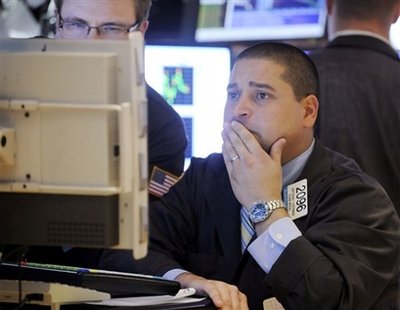

















![Reblog this post [with Zemanta]](http://img.zemanta.com/reblog_e.png?x-id=4528aa24-8514-44ce-9cfd-22fb9a0a8a2a)



![Reblog this post [with Zemanta]](http://img.zemanta.com/reblog_e.png?x-id=d70032fa-7281-46a0-997c-333af49ae4b1)
![Reblog this post [with Zemanta]](http://img.zemanta.com/reblog_e.png?x-id=87c77b4e-c1ca-4899-9d1d-2de3232388f2)
